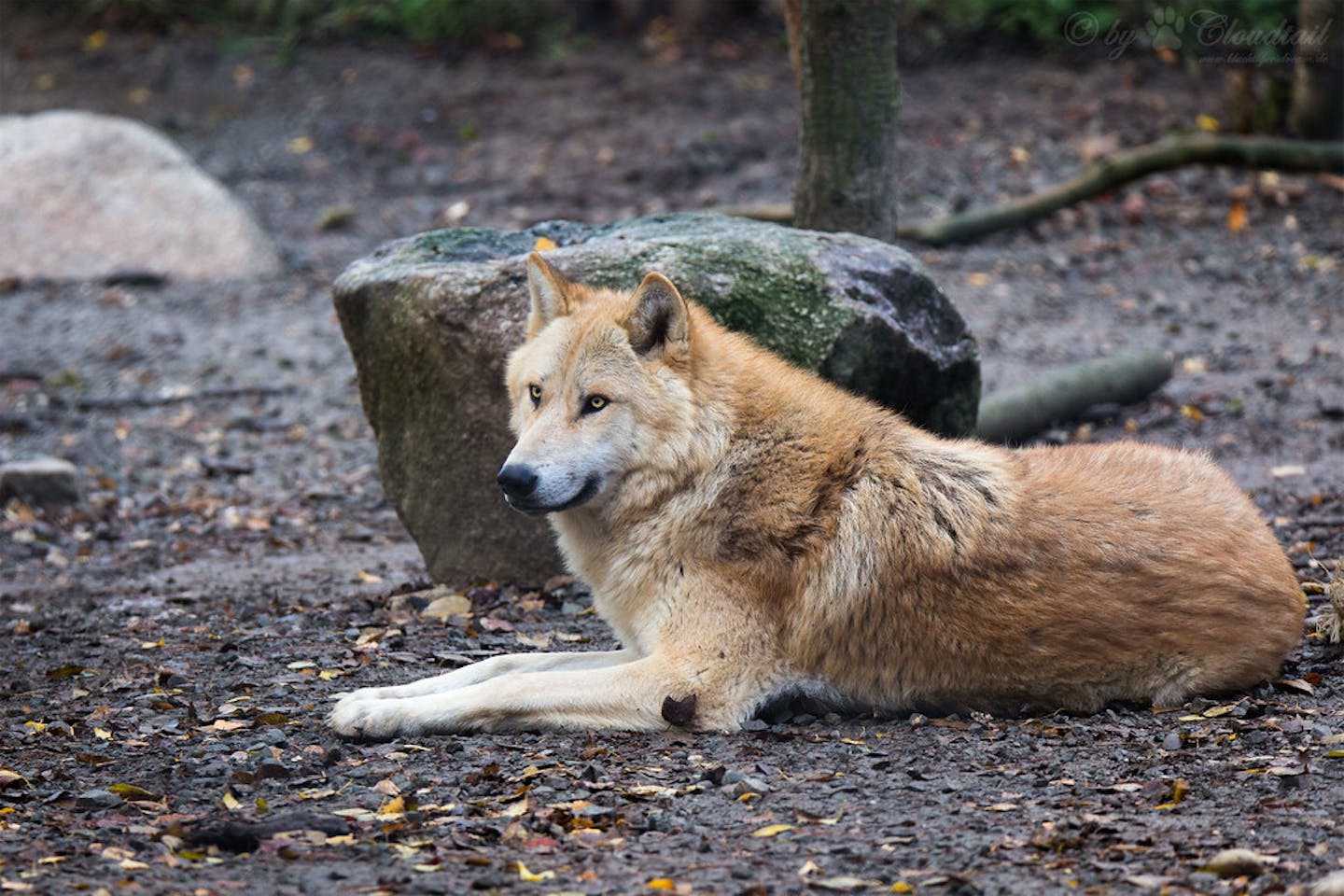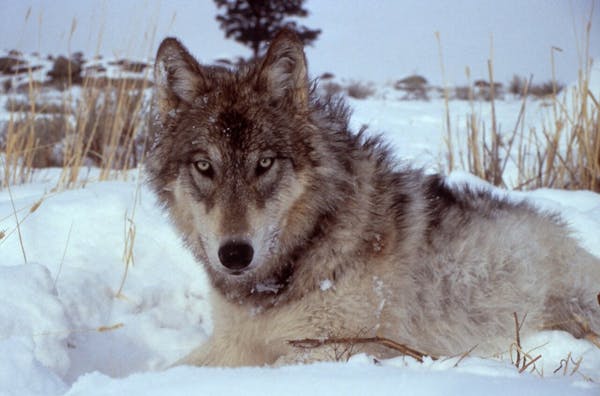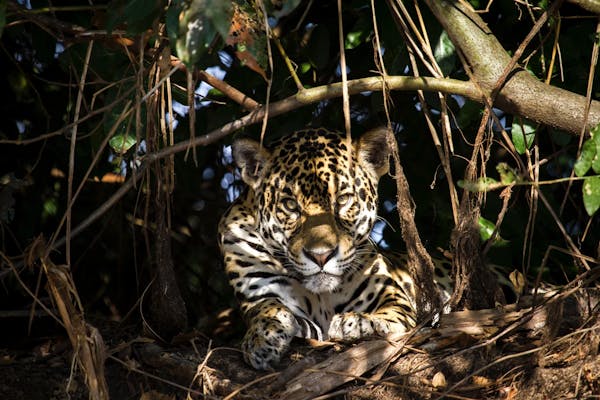Eastern timber wolves: fascinating apex predators vital to forest health
- Nature Conservation
- Land Conservation
- Iconic Species
- Wildlife
- Mammals
- Northeast American Forests
- Northern America Realm
One Earth’s “Species of the Week” series highlights an iconic species that represents the unique biogeography of each of the 185 bioregions of the Earth.
As night falls in the thick, densely wooded forest that spans across the Great Lakes region and southeastern Canada, a low siren of a howl pierces through the dark and is followed by a chorus of equally eerie and majestic cries. As their name suggests, eastern timber wolves are made for life among the forests.
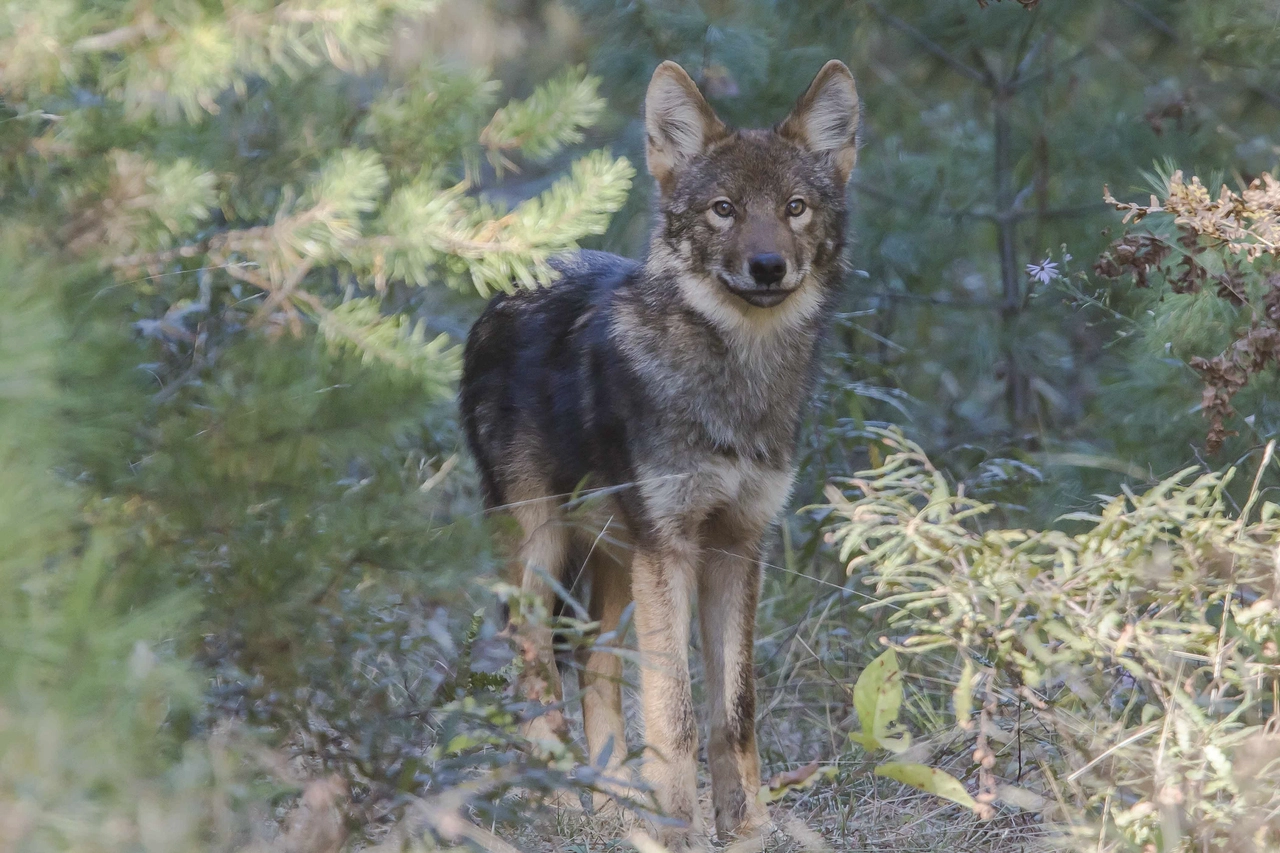
Eastern timber wolf (Canis lupus lycaon) in Algonquin Provincial Park. Image credit: Michael Runtz, Creative Commons
Known also as the eastern wolf, timber wolf, or Algonquin wolf, they have baffled biologists with their origins. Some claim they are a unique subspecies of gray wolves, while others say they are a separate species that originally split from a common ancestor over 1 million years ago.
Regardless of their mysterious past and spooky personification throughout folklore, eastern timber wolves are a fascinating species and, as apex predators, are essential in maintaining the balance of their ecosystem.

The eastern timber wolf (Canis lupus lycaon) is the iconic species of the Northern Great Lakes Forests bioregion (NA11), part of the Northeast American Forests subrealm in Northern America.
Smaller than the standard gray wolf but larger than a coyote, eastern timber wolves are intermediate, with females weighing on average 23.9 kilograms (53 lb) and males 30 kilograms (67 lb). From the tip of the nose to the end of their tail, they measure about 1.6 m (5.5 ft) in length and 63 to 91 cm (25 to 36 in) in height.
They come in various colors but are most commonly a grayish-brown mix, with their flanks and chest having a lighter cream hue.
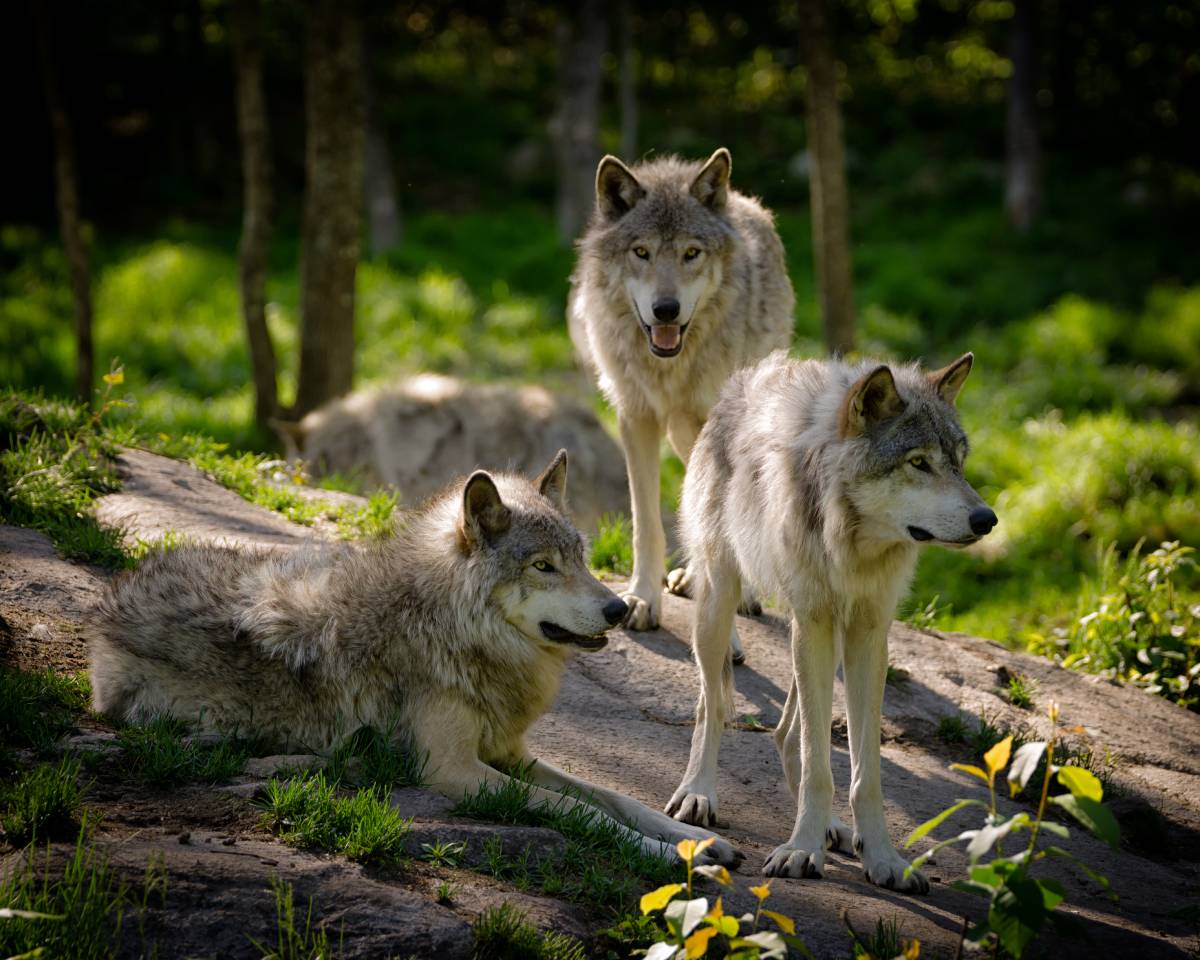
A pack of eastern timber wolves. Image credit: GatorDawg | iStockphoto
Genome sequencing in 2016 indicated that this species resulted from ancient and complex gray wolf and coyote mating. Their genetic makeup is 58% gray wolf and 42% coyote, with hybridization occurring 546–963 years ago.
Living together in packs, eastern timber wolves are very social and loyal, with the dominant male and female breeding pair leading the way. Communication among the group and their night hunting are the reasons for their frequent howling.
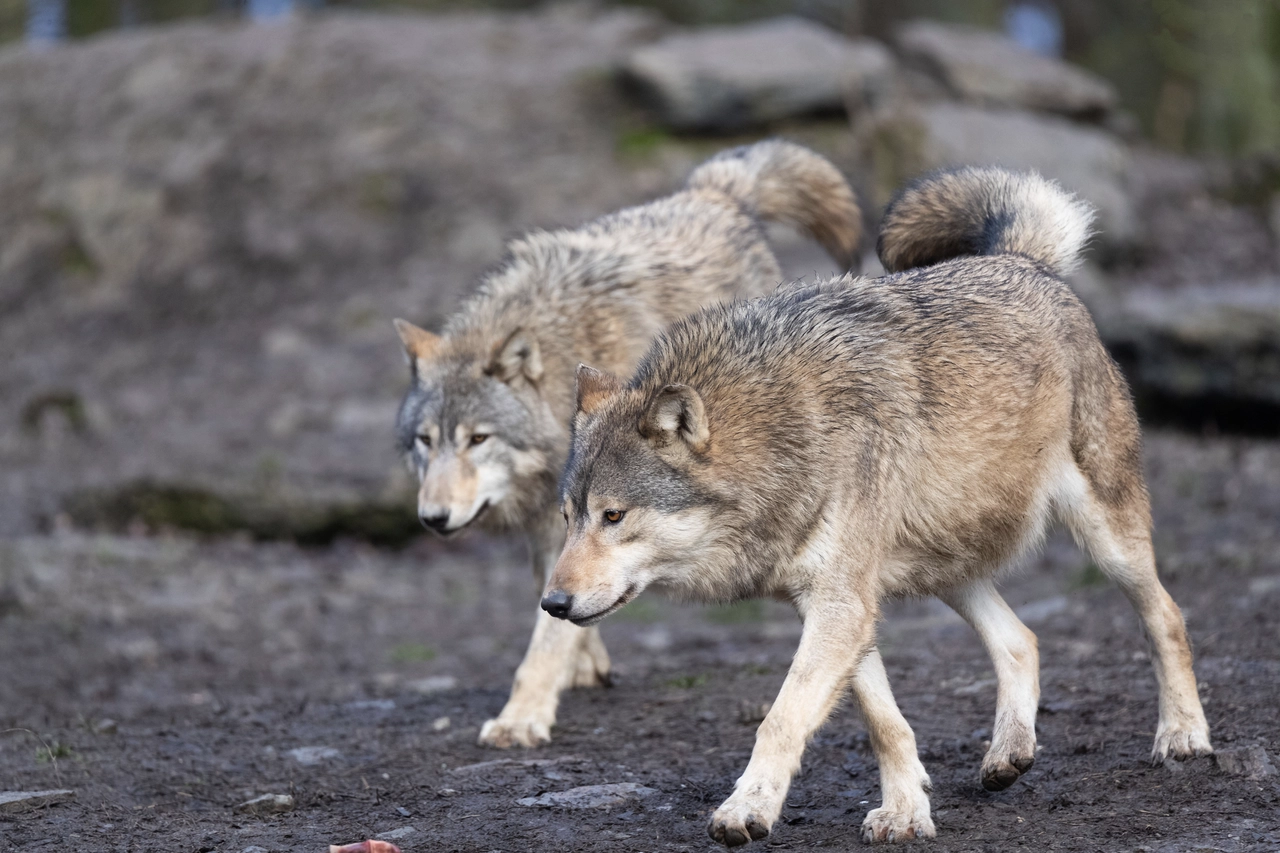
Eastern timber wolf (Canis lupus lycaon). Image credit: iNaturalist
They have large territories of about 150 km (93 mi) in which they roam for food, as they can eat as much as 20 kg (44 lb) a day. Primarily targeting white-tailed deer, caribou, and elk, eastern timber wolves keep these large herbivore populations in balance, keeping the overall forest health and growth rate in check.
Despite their apex predator role, these carnivores have occasionally been spotted foraging for blueberries in July and August, when the berries are in season.
In Algonquin mythology, the eastern timber wolf is ma-hei-gan or nah-poo-tee. The spirit brother of the folk hero Nanabozho assists him in several of his adventures and helps him recreate the world after a massive flood. To the Indigenous of this region, the eastern timber wolf’s role at the head of the food chain and its trickling-down effect to the vitality of the smallest plant life was widely known and praised.

Eastern timber wolf (Canis lupus lycaon). Image credit: Cloudtail the Snow Leopard
This knowledge of their importance was sadly lost as settlers descended into the region and viewed them as a threat to themselves and their livestock, almost wiping them to extinction in the early 1900s.
Today, eastern timber wolves survive in only 3% of their original habitat in the United States.
However, hope is spreading as there are continued efforts across Canada and the United States to protect, conserve, and keep eastern timber wolves on the endangered species list and educate the public about this magnificent species and their role in maintaining forest ecosystems.
A recent conservation success story was achieved for the eastern timber wolf's cousin, the gray wolf. In February 2022, a federal judge reversed the Trump administration’s decision to remove gray wolves from the endangered species list in the continental United States. This action was due to the tireless efforts of wildlife organizations who fought for the species and their essential role in the health of our shared planet.
Explore Earth's Bioregions